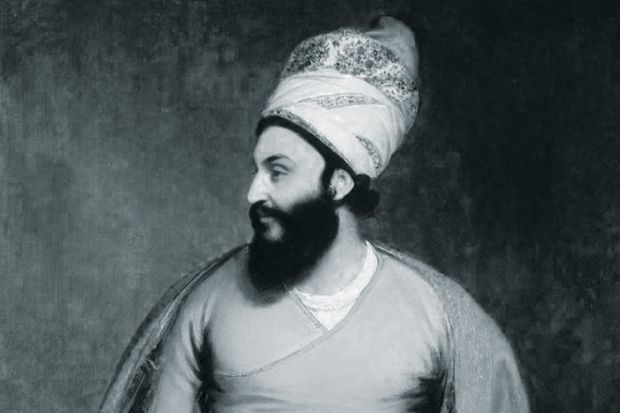There are several quirky anecdotes nicely told in Nile Green’s history of six Persian Muslims studying in England from 1815 to 1819. One involves Mirza Salih, the designated diarist of the adventurers, who, stopping in at Bartholomew’s “Turkish” baths in Leicester Square, naturally thinks to make himself at home, streaking his beard with henna and lounging on benches, much to the consternation of the English gents watching in horror. But Salih could be as horrified by the English as they of him. In another story, he recounts tumbling out of a carriage en route to Cambridge and gazing up to realise “Englishwomen wear nothing under their dresses…: it was not a pretty sight!” This, too, though, was an education of sorts.
Green enthusiastically pieces together the record of these early international students, largely from Salih’s diary, and from their lively correspondence with an English society for whom they were the objects of understandable fascination. The first group of students to study in Western Europe, this band of would-be chemists, gunmakers, blacksmiths, engineers and writers travelled to the land they called “Inglistan” as representatives of the Persian court, seeking knowledge of the new sciences.
In Salih’s diary, Green unearths a genuinely valuable outsider’s portrait of Regency England, its culture, manners and burgeoning industry. That this was “Jane Austen’s London”, as the book’s title insists, seems almost irrelevant, a lazy shorthand for a connection that is tenuous at best. It seems unlikely that they crossed paths with Austen, but the students did have a chaperone called D’Arcy, evidently run ragged by well-heeled charges who happily racked up astronomical coffee-shop bills and ordered prodigious quantities of brandy from Boulogne.
Through their eyes, Green recovers an England that seemed truly exotic. How staggering, Salih noted, was the insatiable English appetite for reading newspapers, how curious horse-drawn trains, and how skilled Birmingham metalworkers. Their appointments included a meeting with astronomer Sir William Herschel, and a dinner with writer Hester Piozzi, who, impressed by their dignity, conceded that they were even “a little better bred than the rest of the company”.
Navigating the splintered religious formations of Regency England, the students discover Christianity to be as complex as Islam. Religion excluded them from the University of Oxford, but observing undergraduates process in their gowns, the word they tellingly alight upon is “madrassa”. Green writes optimistically, taking their visit as evidence of how long Muslims have been engaged in the same pursuits of “science, reason and tolerance” as modern Europeans. Apart from a rather generalising introduction, this is a book that doesn’t overstate its obvious contemporary relevance. It historicises Islam’s complex relationship with the West, delighting in the particularity of the encounter.
The students variously relish in scallops, join the Freemasons and fall in love. The blacksmith, Muhammad Ali, seems to have converted to the Unitarian church and married a market girl, Mary Dudley, who somehow secured passage home with him, where she resolutely insisted “on the use of knives and forks”. This jaw-dropping story comes late in the day, and is only sketchily delineated. In general, the writing is uneven, sometimes hammy, often repetitive, and tediously sycophantic regarding the heroics of diplomat Sir Gore Ouseley (Green acknowledges a debt to Ouseley’s scholarly foundation). Nevertheless, this is a fascinating record of a profound, strange and charming encounter of East and West.
Shahidha Bari is lecturer in Romanticism, Queen Mary University of London.
The Love of Strangers: What Six Muslim Students Learned in Jane Austen’s London
By Nile Green
Princeton University Press, 416pp, £24.95
ISBN 9780691168326 and 9781400874132 (e-book)
Published 16 December 2015
POSTSCRIPT:
Print headline: Having a ball in the Big Smoke
Register to continue
Why register?
- Registration is free and only takes a moment
- Once registered, you can read 3 articles a month
- Sign up for our newsletter
Subscribe
Or subscribe for unlimited access to:
- Unlimited access to news, views, insights & reviews
- Digital editions
- Digital access to THE’s university and college rankings analysis
Already registered or a current subscriber? Login




